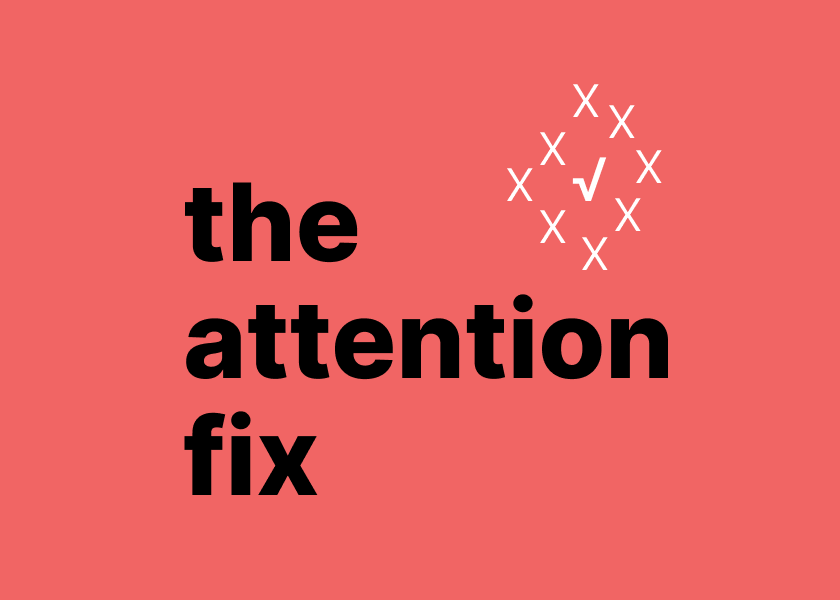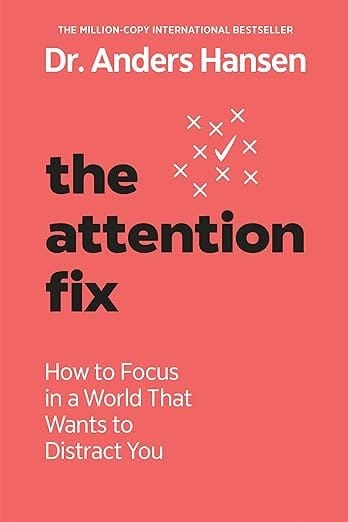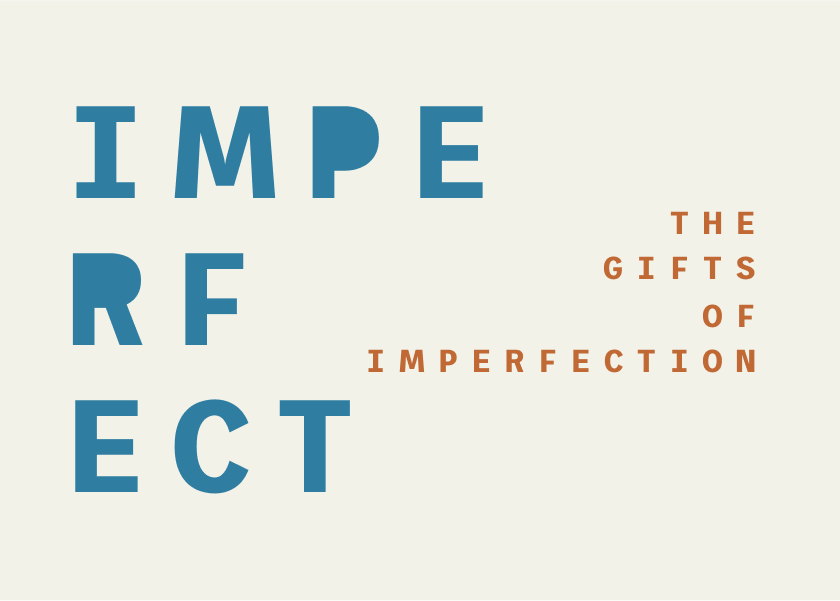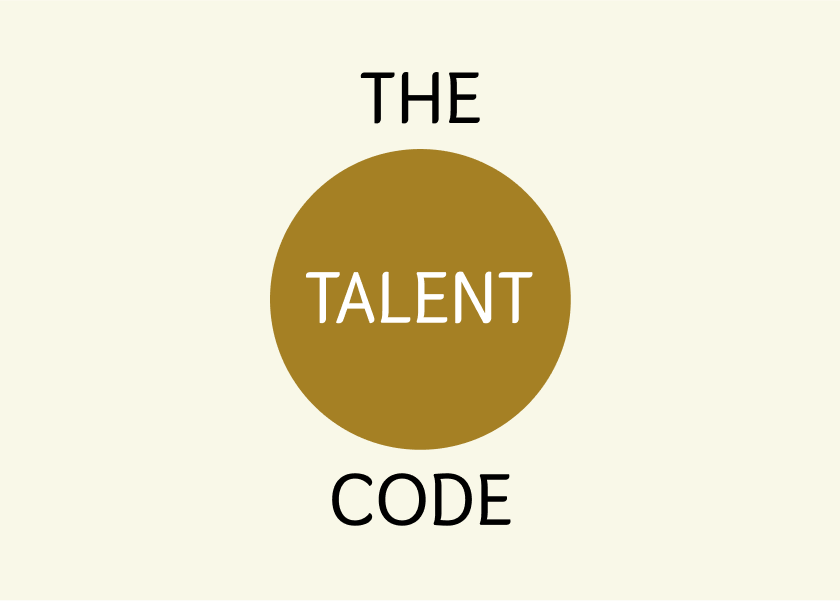The Attention Fix by Anders Hansen - Summary
Overwhelmed by the digital world? This book reveals how smartphones and social media hijack our Stone Age brains, leading to distraction, anxiety, and sleeplessness. Discover the science-backed strategies to reclaim your focus, boost your well-being, and thrive in the digital age!

This summary provides you with the book's essential insights and offers actionable takeaways to implement in your daily life.
Listen to ShelfHelp's podcast about this book.
How to Focus in a World That Wants to Distract You
Are you struggling to concentrate in today's hyper-connected world? Do you feel constantly bombarded by digital distractions, leaving you feeling stressed, anxious, and unable to focus? Psychiatrist and author Dr. Anders Hansen tackles these timely concerns in his insightful book, The Attention Fix: How to Focus in a World That Wants to Distract You. This international bestseller, originally published in Swedish as Skärmhjärnan in 2019, delves into the fascinating world of neuroscience to explain how our evolutionary past clashes with our digital present. By understanding the mechanisms at play, Hansen empowers us to reclaim our attention and thrive in a world designed to distract us.
Table of Contents
- About the Author
- Who Should Read This Book?
- Key Insights and Themes
- Detailed Summary
- Review
- Actionable Takeaways
- FAQs
- Conclusion
About the Author
Dr. Anders Hansen is a leading Swedish psychiatrist and author whose work focuses on the intersection of neuroscience, mental health, and modern living. He is also a renowned speaker and has his own TV series exploring the human brain. Dr. Hansen's books, including Unlocking the ADHD Advantage, The Happiness Cure, and The Mind-Body Method, have sold millions of copies worldwide, topping bestseller lists and garnering prestigious awards like the Big Health Award and the Mensa Prize. His expertise and engaging writing style make complex scientific concepts accessible to a wide audience.
Who Should Read This Book?
The Attention Fix is a must-read for anyone struggling to concentrate in today's digital world. This includes:
- Individuals feeling overwhelmed by digital distractions: If you find yourself constantly checking your phone, struggling to focus on tasks, or feeling drained by the constant influx of information, this book provides valuable insights and solutions.
- Parents concerned about their children's screen time: The book offers evidence-based advice for navigating the challenges of raising children in a digital age, helping them develop healthy tech habits and protect their well-being.
- Anyone interested in understanding the impact of technology on the brain: The Attention Fix provides a fascinating exploration of the brain's evolutionary history and how it interacts with modern technology.
Key Insights and Themes
Here are some of the key takeaways from The Attention Fix:
- Our brains are not wired for the digital age: The human brain evolved over millennia to thrive in a world vastly different from our current digital landscape. This mismatch explains why we struggle with constant distractions and information overload.
- Stress, anxiety, and depression are often rooted in evolutionary responses: While these mental challenges are prevalent in today's world, they are often rooted in ancient survival mechanisms that are no longer adaptive to modern life. Understanding this can empower us to manage these challenges more effectively.
- Cell phones and social media exploit our brain's reward system: Digital technologies are designed to be addictive, hijacking our brain's dopamine system to keep us hooked. Recognizing these mechanisms is crucial for taking control of our digital habits.
- Physical exercise is a powerful antidote to digital overload: Exercise has profound effects on the brain, improving focus, reducing stress, and enhancing overall mental well-being.
- We have the power to shape our digital future: By understanding the impact of technology on our brains, we can advocate for more human-centered design and make conscious choices to cultivate a healthier relationship with technology.
Detailed Summary
Below is a more detailed summary of the book, grouped by the main themes:
The World That Shaped Us
- Evolutionary Mismatch: Our brains evolved to thrive in a world of scarcity, danger, and constant movement. This stands in stark contrast to the abundance, safety, and sedentary nature of modern life.
- The Smoke Detector Principle: Our stress system evolved to be hypersensitive, triggering at the slightest hint of danger. In today's world, this leads to chronic stress and anxiety over relatively minor threats.
- The Power of Anxiety: While often perceived negatively, anxiety is an essential evolutionary tool that helps us plan and focus on important tasks.
Stress, Anxiety, and Depression – Evolutionary Winners?
- The HPA Axis: This system, responsible for our stress response, is shared by many animals but is uniquely activated in humans by hypothetical scenarios and future anxieties.
- Depression as a Survival Mechanism: While debilitating, depression may have evolved to protect us from danger and conserve energy during times of stress.
- The Importance of Recognizing Warning Signs: Prolonged stress can have severe consequences for our well-being, manifesting in physical and mental symptoms we shouldn't ignore.
Cell Phones – Our New Drug
- Dopamine and Digital Seduction: Dopamine, a key brain chemical, drives us to seek rewards and novelty. Cell phones and apps exploit this system, delivering frequent, unpredictable rewards that keep us engaged.
- The Allure of Uncertainty: Our brains are particularly drawn to uncertain outcomes, as they signal potential rewards. This explains our addiction to checking for notifications and social media updates.
- Silicon Valley's Pang of Conscience: Even those who created addictive technologies recognize their potential harm and advocate for limiting their use.
Focus – The Scarcity of Our Time
- Multitasking Myth: Despite popular belief, our brains are not designed to multitask effectively. Attempting to do multiple things at once leads to reduced focus and poorer performance.
- Attention Residue: Switching between tasks leaves a mental residue that impairs our ability to fully concentrate on the new task. It takes significant time for our brains to refocus.
- The Mere Presence Effect: Even when silenced, the mere presence of a cell phone can diminish our cognitive capacity and distract us from the task at hand.
How Do Screens Affect Our Sleep and Mental Health?
- Blue Light Disruption: The blue light emitted from screens suppresses melatonin production, disrupting our sleep-wake cycles and leading to poor sleep quality.
- The Importance of Sleep Hygiene: Prioritizing good sleep hygiene by limiting screen time before bed and creating a relaxing sleep environment is crucial for our mental and physical health.
- Digital Stress and Mental Health: Excessive screen time contributes to stress, anxiety, and depression, particularly among young people. This is exacerbated by social comparison and the pressure to be constantly connected.
Social Media – Our Biggest “Influencer”
- The Evolutionary Power of Gossip: Gossip, both positive and negative, has played a crucial role in human social dynamics, helping us navigate complex social hierarchies and learn from others' experiences.
- The Dopamine Hit of Self-Expression: Talking about ourselves triggers the release of dopamine, making us feel good. Social media platforms exploit this by providing a constant avenue for self-promotion and validation-seeking.
- Digital Envy and Social Comparison: Social media feeds us a curated stream of idealized images and experiences, fueling feelings of inadequacy and dissatisfaction with our own lives.
- The Erosion of Empathy: While potentially connecting us to people worldwide, excessive social media use may contribute to a decline in empathy and interpersonal sensitivity.
What are Screens Doing to Children and Young People?
- Developing Brains at Risk: Children's brains are particularly vulnerable to the effects of excessive screen time, impacting their development of attention, language skills, motor skills, and social-emotional intelligence.
- The Delayed Gratification Challenge: Instant gratification provided by digital devices can impair children's ability to delay gratification, hindering their ability to persevere through challenges and develop essential life skills.
- Screen Time vs. Real-World Experiences: Excessive screen time displaces valuable real-world experiences crucial for healthy development, including play, social interaction, physical activity, and exploration.
Exercise – A Smart Antidote
- Physical Activity Boosts Brainpower: Exercise has a profound impact on the brain, improving cognitive function, reducing stress, and enhancing mood.
- Countering Digital Overload: Physical activity helps us manage the flood of information and impulsivity fueled by digital devices by strengthening our ability to control our attention and resist distractions.
- Investing in the Future Brain: Prioritizing physical activity, especially in schools, can equip children and young people with the cognitive and emotional resilience needed to thrive in a rapidly evolving digital world.
The Future Brain – Will It Adapt?
- The Fear of the New: Throughout history, humans have expressed concerns about the potential negative impacts of new technologies, from the printing press to the railway.
- Homo Sapiens 0.5 or 2.0?: The choices we make today regarding our digital habits will determine whether technology enhances or diminishes our cognitive abilities and well-being.
- Reclaiming Our Attention: By understanding the evolutionary roots of our digital struggles, we can make conscious choices to cultivate a healthier relationship with technology and reclaim our attention.
Review
The Attention Fix is a well-researched and compelling exploration of the cognitive and emotional challenges posed by our digital world. Hansen skilfully blends scientific insights with relatable anecdotes and practical advice, making complex neuroscience concepts accessible to a broad audience.
Strengths:
- Engaging and Easy to Understand: Hansen avoids technical jargon and explains complex scientific concepts clearly and concisely.
- Evidence-Based Approach: The book is grounded in solid scientific research, drawing on numerous studies to support its claims.
- Practical and Actionable Advice: The book offers concrete strategies and tips for managing digital distractions, improving focus, and cultivating a healthier relationship with technology.
Weaknesses:
- Occasional Oversimplification: While aiming for accessibility, the book sometimes simplifies complex issues, potentially missing nuances.
- Limited Focus on Individual Differences: The book primarily focuses on general trends and may not fully address the unique ways different individuals experience and cope with digital challenges.
What Others Say:
- Readers on Goodread give the book a rating of 3.92.
- Dr. Rangan Chatterjee (The Stress Solution) calls the book an “antidote to our modern-day struggles."
- Silta Education says Hansen's book are "easy to read, full of interesting research findings, and offer a lot of food for thought."
Actionable Takeaways
So what can you do if you want to apply the lessons from the book in real life:
- Limit Cell Phone Use: Set specific times for checking your phone, turn off unnecessary notifications, and consider using grayscale mode to reduce its allure.
- Create Tech-Free Zones: Designate spaces and times where phones and screens are strictly prohibited, allowing for focused work, quality time with loved ones, and restful sleep.
- Prioritise Physical Activity: Engage in regular exercise, aiming for at least 30 minutes of moderate-intensity activity most days of the week.
- Cultivate Mindfulness: Practice mindfulness techniques to enhance self-awareness, manage stress, and strengthen your ability to resist distractions.
- Model Healthy Tech Habits: Set a good example for children and young people by demonstrating balanced and mindful tech use.
FAQs
Here are some common questions and answers about the book:
- What is The Attention Fix about? The book explores the impact of digital technology on the human brain, explaining why we struggle with distraction, anxiety, and information overload. It offers practical strategies for reclaiming our attention and thriving in a digital world.
- Is The Attention Fix worth reading? Yes, it is a valuable resource for anyone struggling to concentrate in today's hyper-connected world. It offers insightful explanations and actionable advice grounded in scientific research.
- What is the main takeaway of The Attention Fix? It's that humans are living in a digital society with hunter-gatherer brains that are easily stressed, distracted, and ill-equipped for multitasking.
- What are social media's and technology's impact on our attention and mental health? Designed to hack our brain's reward system by providing a constant stream of dopamine hits, it can lead to stress, anxiety, depression, and sleep problems. Furthermore, the constant distractions of digital technology can impair our ability to concentrate and form long-term memories. As if that wasn't enough, social media may also be eroding our empathy.
Conclusion
The Attention Fix provides a timely and important wake-up call, urging us to reclaim our attention in an increasingly distracting world. By understanding the interplay between our evolutionary past and our digital present, we can make informed choices to cultivate a healthier relationship with technology. I would suggest that you don't wait until you're completely overwhelmed, but instead take action now to strengthen your focus, reduce stress, and live a more fulfilling life.

The Attention Fix: How to Focus in a World That Wants to Distract You
by Anders Hansen
As an Amazon Associate, Shelfhelp may earn money from qualifying purchases. Needless to say, Shelfhelp only includes affiliate links to books we recommend and think are worth your time reading.



